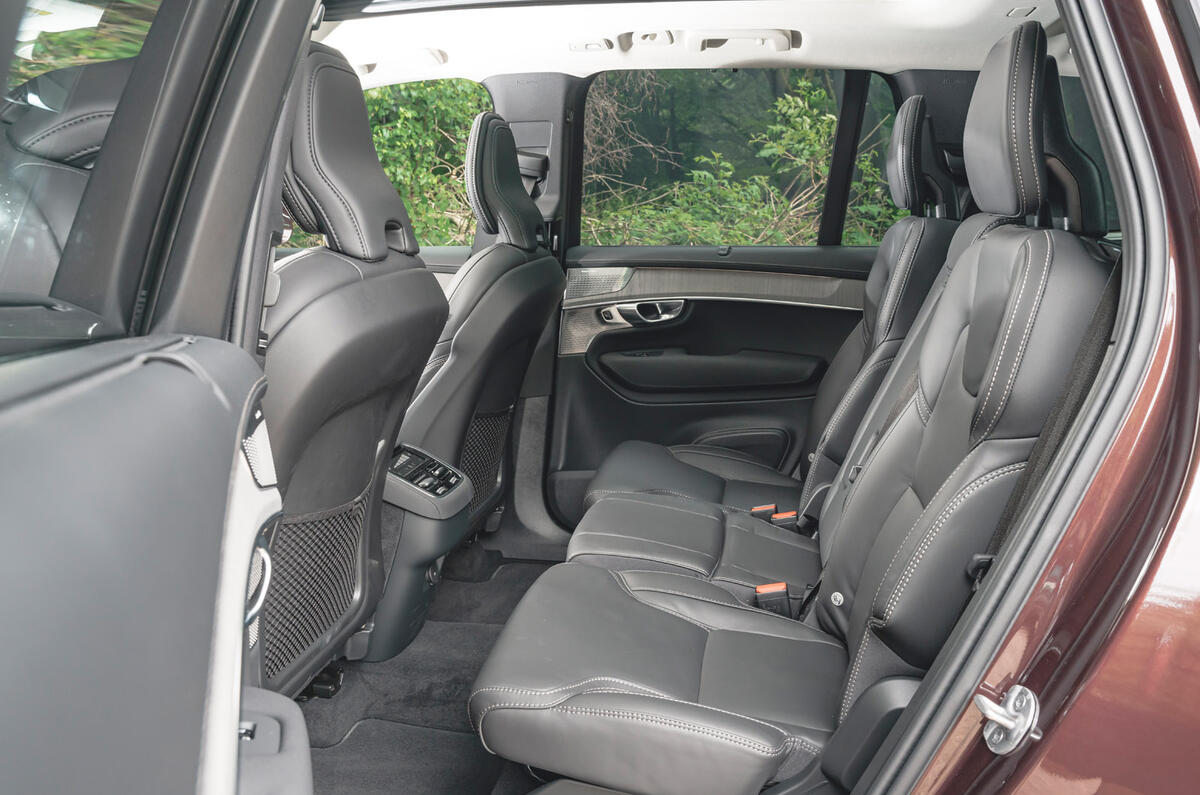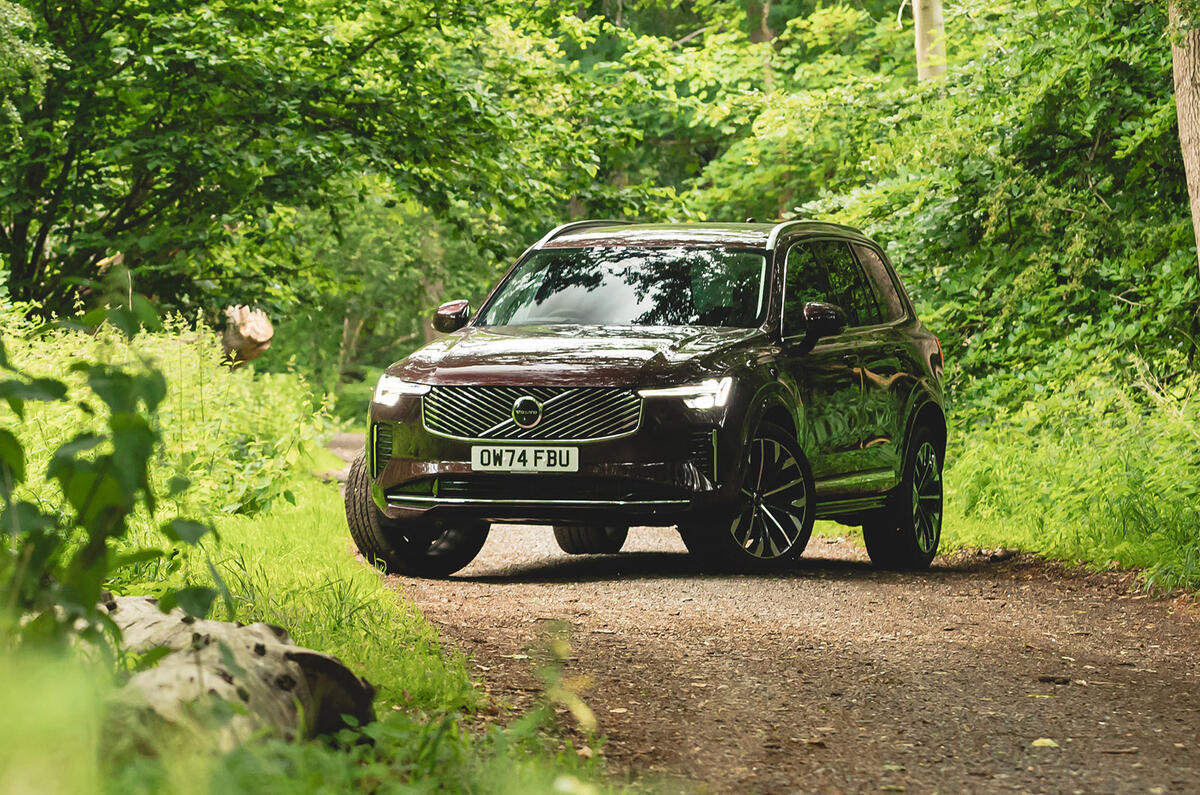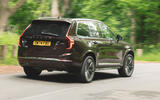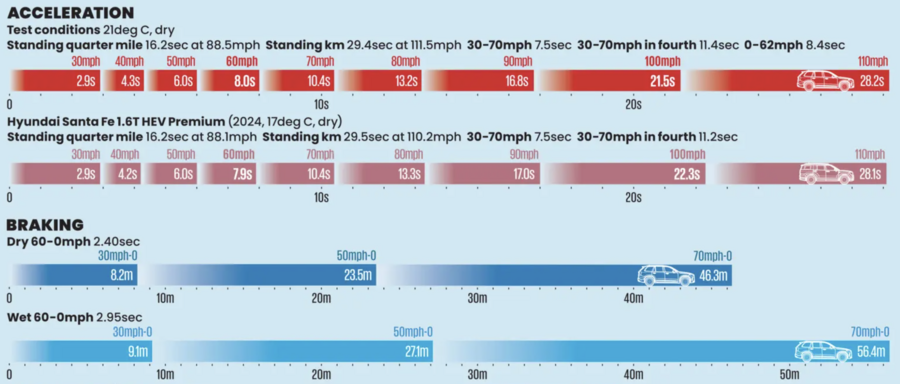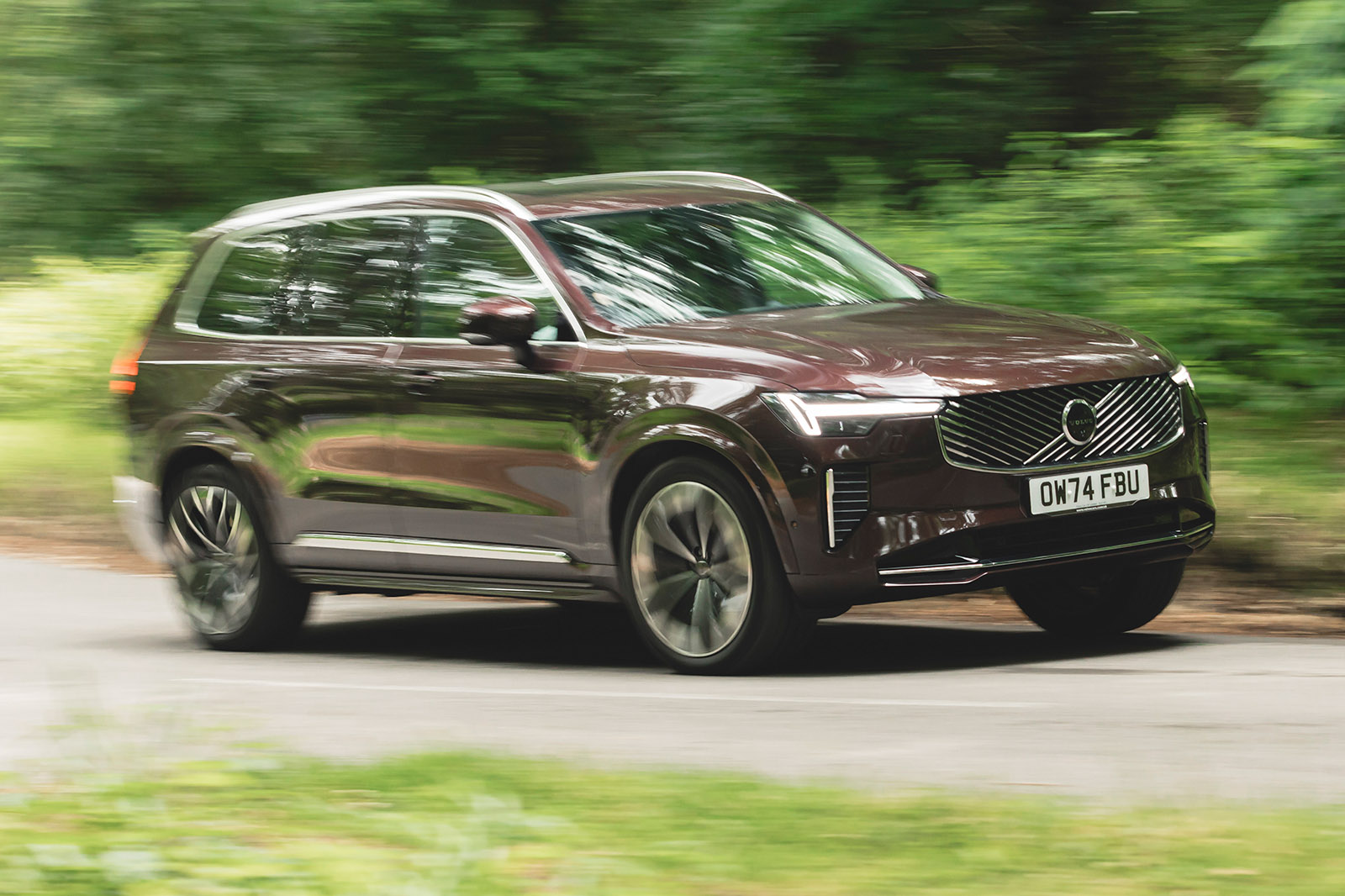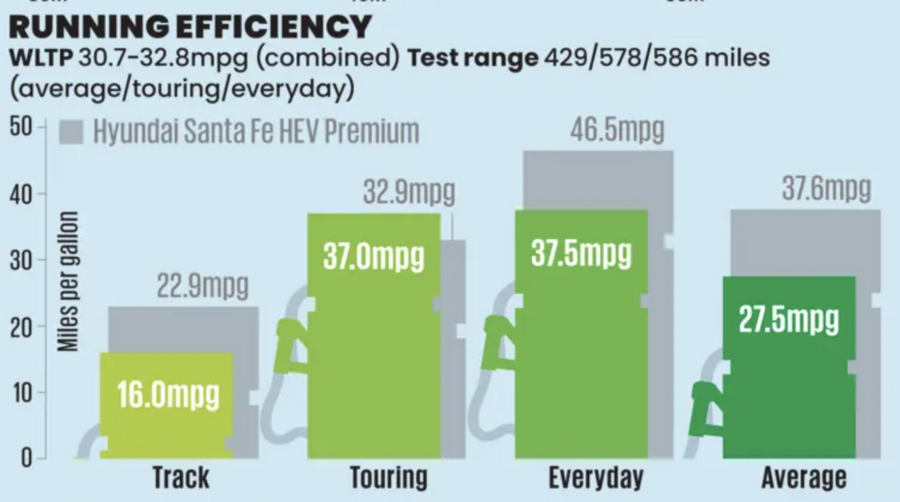The XC90’s seven-seats-as-standard approach to life in the large SUV niche is likely to go down well with its core clientele. There are two key points to note about its passenger versatility. One, you get those seven seats irrespective of powertrain choice. (In an equivalent Defender 110, Q7, X5 or GLE plug-in hybrid, the hybrid system packaging rules out a third row of seats.) Two, in the B5 AWD version, you get seven seats and a spacesaver spare wheel.
The XC90’s second-row seats are three individual chairs rather than being split 60/40 and each reclines and slides fore and aft by 120mm to ‘pass’ available leg room to those in row three or to make extra boot space. The way the second-row chairs tilt and slide forwards makes accessing the third row reasonably easy for passengers, but some remote release buttons would certainly make putting those extra seats up easier when you’re standing at the car’s boot opening.
As for passenger space and comfort, the XC90’s third row remains suitable very much for smaller adults and kids only. Its second-row seats are roomier, if a little meanly padded by the standards of luxury cars. Volvo’s option to convert the middle second-row seat, with its built-in booster cushion, for younger children, and then to slide it forwards so that it can be accessed more easily from the front row, is likely to remain a popular feature.
In the front, there’s plenty of refreshed digital technology – a new 11.2in portrait-orientated touchscreen console, for one (see Multimedia, overleaf) – and some crisper-looking digital instruments. But, barring some redesigned air vents, most of the fascia and secondary controls are familiar and unchanged – oversized audio volume button and twist-to-start engine start/stop knob included.
The front seats, like those in the rear, are a little thinly padded in places but offer lots of adjustment potential and commendable comfort in broad terms. Visibility is as good as you could want, with the potential to sit up high if you prefer. Perceived material quality and fit and finish are strong, with nothing looking cheap or antiquated.

Multimedia - 3.5 stars
The XC90’s new 11.2in portrait touchscreen is of the generation first seen in the EX30 and is making its way into other Volvos this year. Powered by Qualcomm Snapdragon processors, it’s claimed to deliver much better responsiveness than the old XC90’s smaller screen, as well as crisper, clearer graphics.
There’s still no physical cursor controller so usability is entirely via the screen or voice command. The heater controls permanently occupy a portion of the display, expanding when you open them, and on the home screen, a quick reference ‘widget’ tries – but in our experience, doesn’t typically succeed – in displaying your most frequently accessed functions.
Like other Android-based systems, this one works well if you use Google-based apps on an Android smartphone. If you don’t, however, you’ll find functionality limited. (Our test car would mirror an iPhone only via a wired connection – not a great look on a £75,000 luxury SUV in 2025.)
The general usability of the system has improved a little since our EX30 road test. Volvo’s quick-access vehicle settings menu allows you to disable certain ADAS features, for instance, while a key on the left steering wheel spoke now permits one-touch deactivation of the speed limit governance buzzer.
We would still prefer some kind of physical cursor controller, either on the steering spokes or centre console, to allow scrolling around the system while only glancing down from the road. But Volvo’s system does seem like it’s slowly heading in the right direction.



















